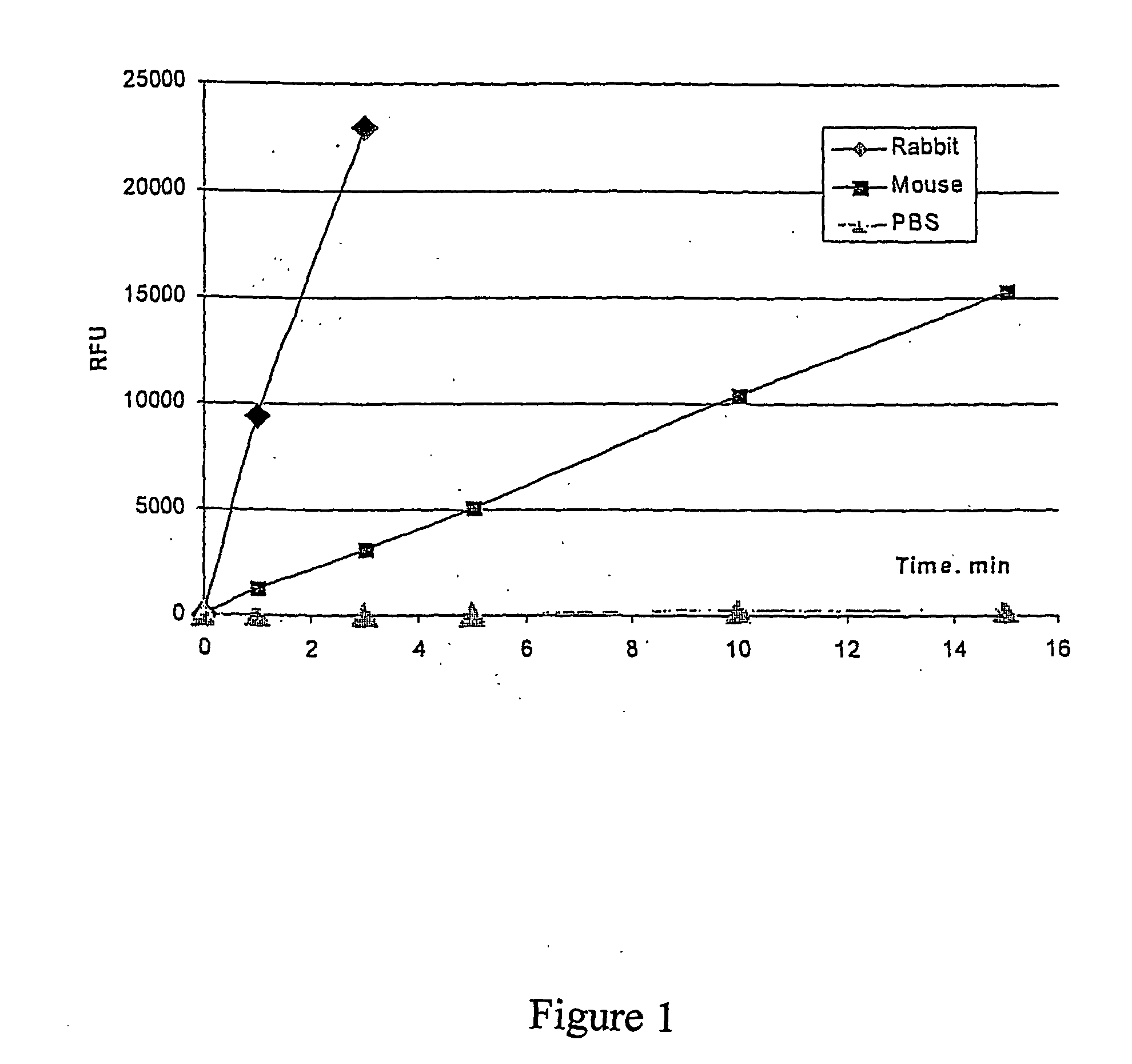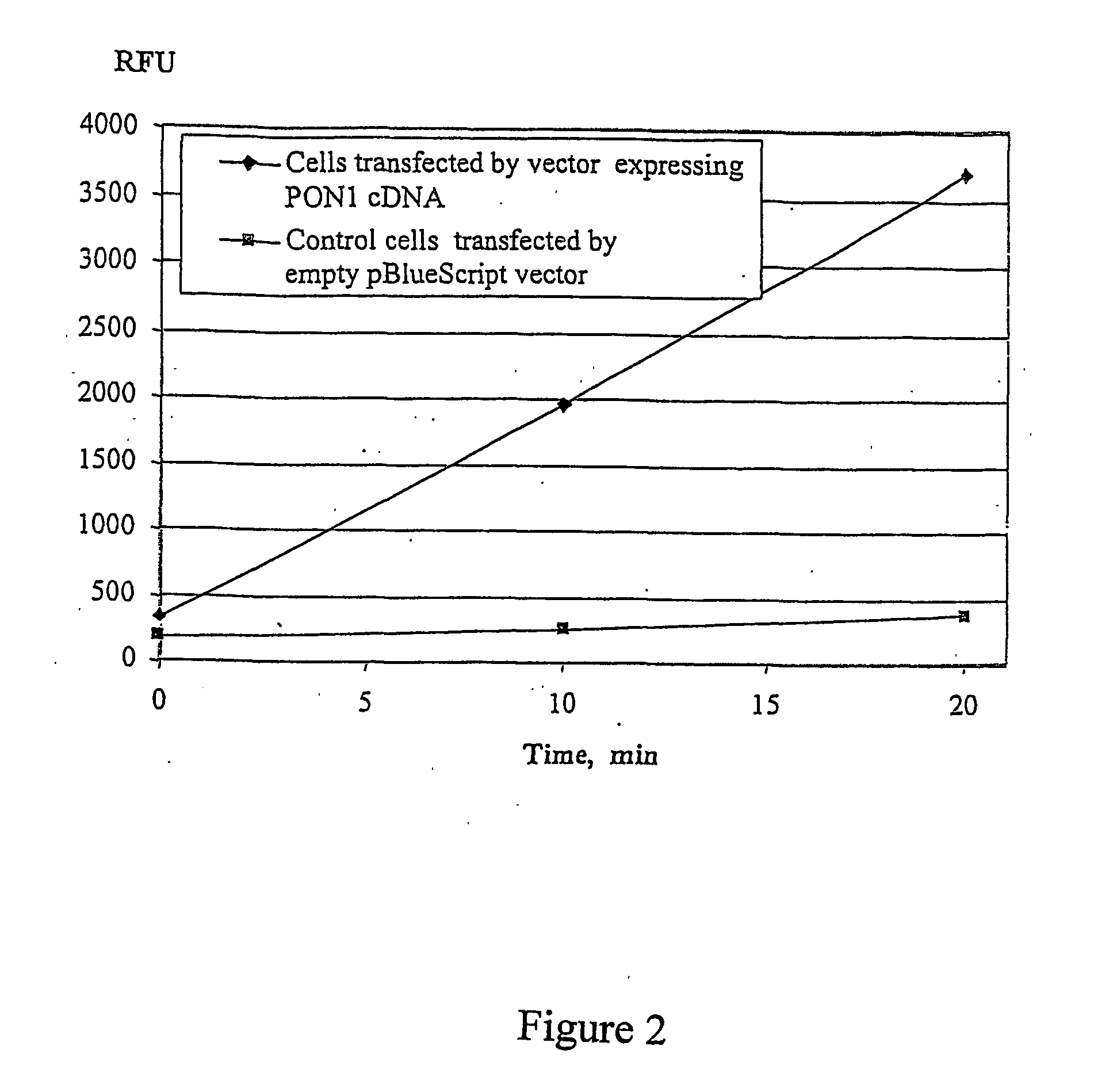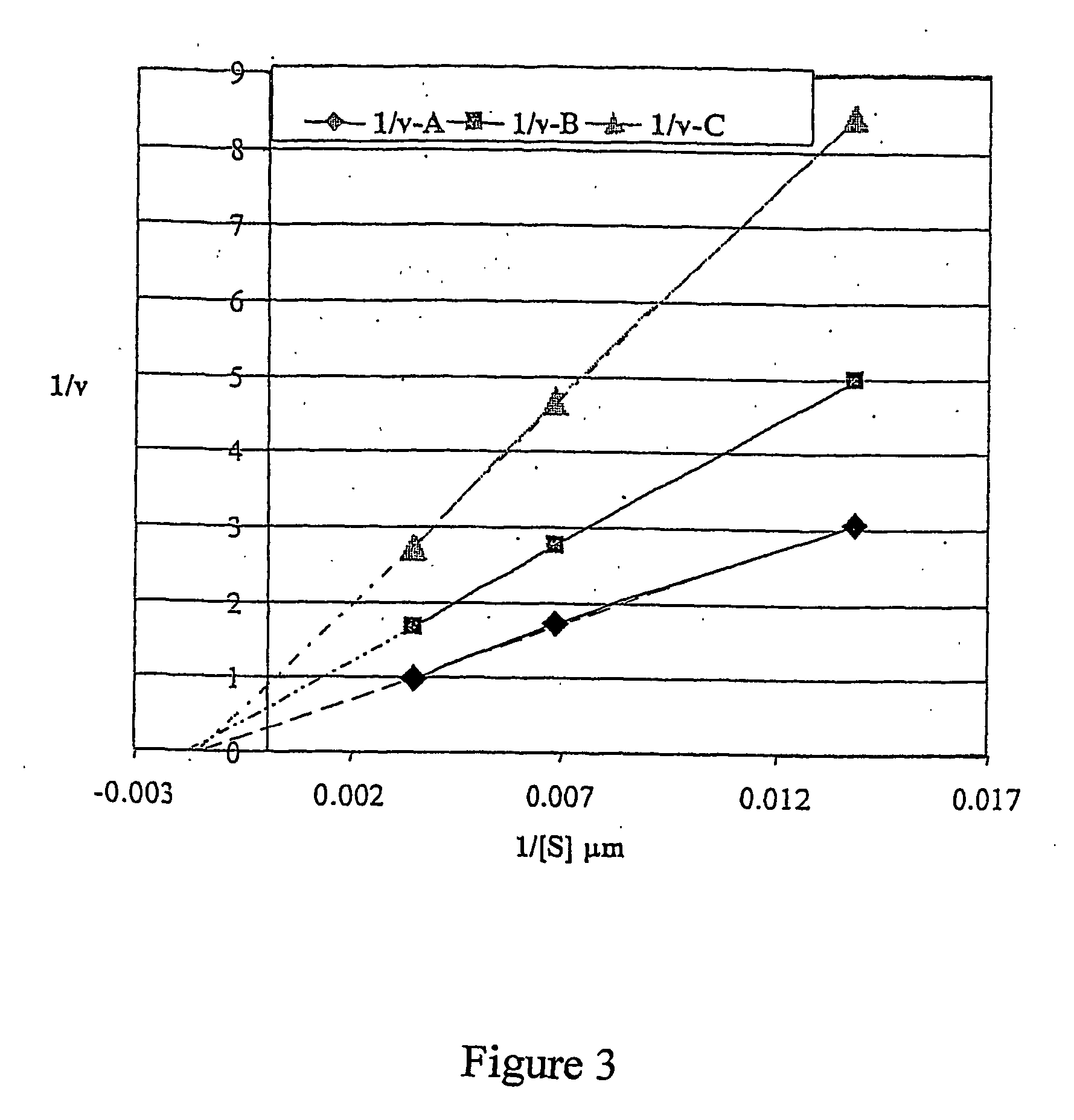Fluorescent substrates for detecting organophosphatase enzyme activity
a technology of organophosphatase and fluorescent substrates, which is applied in the field of fluorescent substrates, can solve the problems of significant delay in the study of the diagnostic value of paraoxonase, low sensitivity, and requires special handling conditions, and achieves high specificity, high sensitivity and specificity. the effect of high specificity of paraoxonas
- Summary
- Abstract
- Description
- Claims
- Application Information
AI Technical Summary
Benefits of technology
Problems solved by technology
Method used
Image
Examples
example 1
[0081] This example demonstrates the specificity of 7-[diethyl-phospho]-,8-difluor-4-methylumbelliferyl towards paraoxonase.
[0082] The tested compounds included: 4-methylumbelliferyl acetate, 4-methylumbelliferyl oleate, 4-methylumbelliferyl heptanoate, 4-methylumbelliferyl palmitate, 6,8-difluoro-4-methylumbelliferyl-octanoate, 7-[diethyl-phospho]-6,8-difluoro-4-methylumbelliferyl [DEPFMU], and ELF-97 palmitate (Molecular Probes, OR), fluorescein diphosphate tetraethyl ester, (3-carboxypropyl)-trimethylammonium chloride 4-methylumbelliferyl ester, and 7-benzyloxy-6,8-difluoro-4-methylumbelliferyl. All compounds were evaluated for possible detection of paraoxonase activity using recombinant human paraoxonase, expressed in CHO cells. For expression of recombinant paraoxonase, human liver cDNA was obtained from Ambion Inc, (Austin, Tex.). Human PON1 cDNA was amplified by PCR with gene specific primers, TRSSP 216 [AAGAATTCCACCATGGCGAAGCTGATTGCGCTC] [SEQ ID NO:1] and TRSSP 217 [AATCTAG...
example 2
[0084] This example illustrates an assay for detection of paraoxonase activity. DEPFMU may be used as a substrate for detection of serum derived as well as recombinant paraoxonase expressed in cell cultures. The following conditions have been used for the detection of paraoxonase in plasma. Samples of serum or plasma may be diluted 1 to 100 times in an assay buffer. This assay was performed in a 96 well “Nunc-immuno” plate. For example, 10 μl of diluted rabbit serum was added to each well of a 96 well plate containing 100 μl of assay buffer plus 100 μM of DEPFMU (stock DEPFMU was prepare as a 50 mM concentrate in dimethylformamide and stored at −20° C.). After thorough mixing the assay solution containing plasma was incubated for 20 min. at 37° C. Hydrolysis of DEPFMU was quantified by measuring the fluorescence level at 355 / 460 using a commercial fluorimeter. The level of fluorescence correlates with the level of 6,8-difluoro-4-methylumbelliferyl released from DEPFMU as result of p...
example 3
[0086] This example illustrates a method of detecting recombinant paraoxonase activity in CHO cells transfected with paraoxonase.
[0087] Human PON1 cDNA was recovered, cloned into pBlueScript KS II, and sequenced to confirm identity. For studies on the expression of paraoxonase PON1, cDNA was subcloned in expression vector under the control of the EF-la promoter. CHO cells were transfected using Fugene 6 reagent with expression vector pHLSS122, containing human PON1 cDNA under EF-la promoter in pBlueScript KS II cloning vector. Transfection with pBlueScript KS II vector DNA was performed for control CHO cells. Transfected cells were plated into 96 well tissue culture plates. 48 hours after transfection, the wells were washed twice with PBS and 100 μl of assay buffer containing 100 μM DEPFMU was added. Immediately after addition, the fluorescence of the wells was monitored using a 96 well SpectraMax Gemini XS fluorescence reader at 355 / 460.
[0088] Data from this experiment is present...
PUM
| Property | Measurement | Unit |
|---|---|---|
| molecular weight | aaaaa | aaaaa |
| emission wavelength | aaaaa | aaaaa |
| emission wavelength | aaaaa | aaaaa |
Abstract
Description
Claims
Application Information
 Login to View More
Login to View More - R&D
- Intellectual Property
- Life Sciences
- Materials
- Tech Scout
- Unparalleled Data Quality
- Higher Quality Content
- 60% Fewer Hallucinations
Browse by: Latest US Patents, China's latest patents, Technical Efficacy Thesaurus, Application Domain, Technology Topic, Popular Technical Reports.
© 2025 PatSnap. All rights reserved.Legal|Privacy policy|Modern Slavery Act Transparency Statement|Sitemap|About US| Contact US: help@patsnap.com



